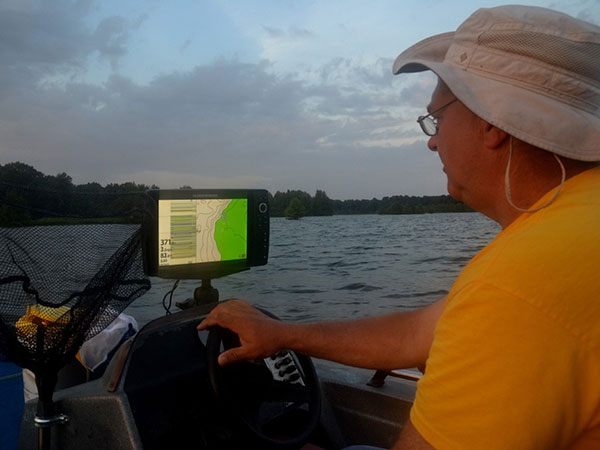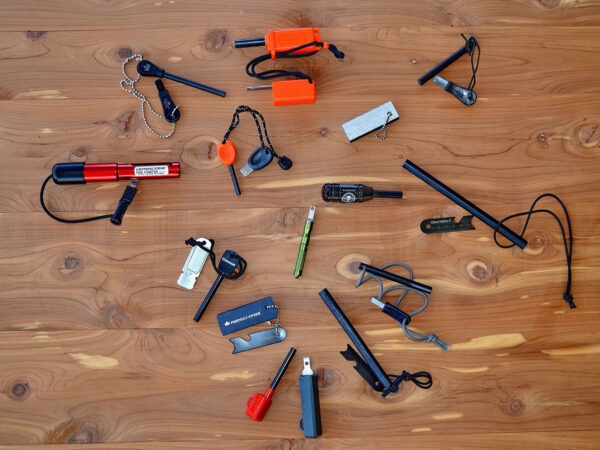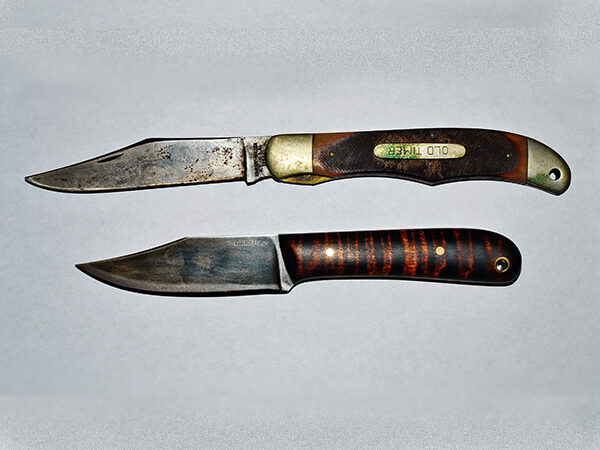I have gotten a lot of emails requesting more information on cast iron skillet cooking. To answer those questions I am running a cast iron skillet cooking feature that I wrote for American Frontiersman magazine last year. Courtesy American Frontiersman magazine. Subscribe by visiting OutdoorGroupStore.com.
cookin_with_cast_ironFROM SPARK TO FLAME
Learning to control fire was one of early man’s most important accomplishments. He found that by being able to create fire he could keep warn, light the darkness, clear land, make tools, cook food and use it as protection from predators.
Researchers are not sure if the first fire-making was the result of discovering that a spark could be generated by friction, such as a hand drill, bow drill or fire plow, or if it was discovered that a spark could be generated when the sharp edge of a hard rock when struck against iron pyrite rocks. What we do know is that when fire-making was mastered it quickly became a part of man’s daily routine.
Fast forward to the Iron Age and the discovery that the sharp edge of a hard stone such as flint, jasper, obsidian or quartzite when struck against high carbon steel produced sparks faster and easier than all previous methods of fire-starting. The flint and steel kit became a part of history from then until the discovery of friction matches in the middle 1800’s. Slowly in the early 1900’s as friction matches were improved, flint & steel kits started disappearing from home hearths, woodsmen pouches and trappers cabins.

However flint & steel kits didn’t entirely disappear. Even today many woodsmen, re-enactors, and survivalists use flint & steel kits, such as those made by Vern’s Flint & Steel (http://www.vernsflintandsteel.net) , much as it was done in the frontier days of early America.
THE KNIFE FOR ALL SEASONS
For over four decades I have depended upon the Schrade Model 125OT knife for most of my guiding and outdoor writing adventures. My first 125OT was given to me by Henry Baer of the Schrade Walden Cutlery Co. back in the late 60’s with the challenge to try it as my knife while guiding big game hunters. He felt sure I would like it. I gave the USA made folding knife a lot of hard use and it became my knife of choice for much of my career. Made from 1095 high carbon steel, the 4-inch clip point blade held an edge well and was quick and easy to sharpen in the field.
Recently I decided I wanted a high quality all-purpose hunting/fishing/camp fixed blade knife that had a high carbon steel blade design similar to the 125OT. My woods roaming buddy, Medrick Northrop, wanted one also, so we began a search to find a forge that could produce such a knife.
A LAKE EUFAULA CRAPPIE DREAM TRIP
As dawn broke on the eastern horizon my fishing buddy, outdoor writer John Phillips, and I were sitting at the launching ramp on Lake Eufaula Alabama watching two mid-size alligators patrol the open water just outside the boat launch area. The June morning was somewhat comfortable for this part of Dixie thanks to a brisk breeze blowing out of the west. It was the perfect beginning of a two day crappie trip that should be on the bucket list of every angler.
John and I were at Lake Eufaula to defy the odds, we were looking for a crappie fishing adventure that was worthy of magazine articles and web copy. There were a couple of things against us from the day we decided this was a challenge we were willing to accept. First, the 45,181 acre reservoir is known for largemouth bass, not crappie. Second, any crappie fisherman worth his salt knows June is not a good month for catching slab-sided crappie.
Two additional challenges developed long before daylight the first morning of our trip. When we left our room at the beautiful Lakepoint State Park Resort Lodge a fairly strong westerly wind hit us in the face, the lake would be choppy. As we walked to the lodge dining room across the lighted parking lot, it caught our attention that the lights were attracting huge swarms of willow flies. The air around the launch site was filled with flying bugs; the fish would be gorged on the massive number of willow flies and not interest in our baits, no matter what we used.
As we watched the gators swimming in the early morning light, waiting for our guide, John and I discussed all the odds against us having a successful day of crappie fishing. “Not to worry,” John said with a smile on his face, “I’ve lined us up with one of the best crappie guides in the country, Tony Adams. Tony is passionate about crappie fishing and under the worst of conditions he can produce fish.”
Tony’s Structure

What John knew that I didn’t was that Tony is constantly putting out “crappie habitat” and has places to fish, regardless of the wind and the weather. He takes a 5-gallon plastic bucket and fills it with concrete, sticking several tall stalks of river cane in it. He puts these fish attractors, John called “crappie habitat” out in groups of five to 10 buckets and may have four or five groups of 10 buckets each in the same general area. He records the location of each on his Hummingbird Helix 12 GPS depth finder. He has placed several hundred of these “crappie habitats” in the lake and he easily can move from one habitat to the other and continuously catch crappie, without having to run all over the lake, or overfishing one location.
Tony has placed the habitat buckets at water depths where he knows the crappie hold at different times of the year so he can catch crappie in the hot summer months, the cold winter months, as well as the spring and fall, often when most people aren’t crappie fishing.



